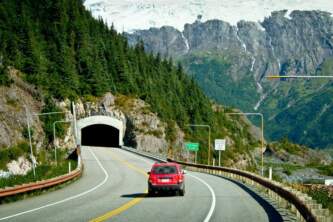Kenai Peninsula Geology & Mining History
The Kenai Peninsula's Golden Geology
65 million years ago, the Kenai Mountains originated from the sands and muds deposited on the sea floor. In the process of their formation, hot silica-rich fluids penetrated the young rocks and then crystallized to form milky white quartz veins. If the hot fluids contained gold and silver that it would form load deposits in the rocks during crystallization. Fast forward a few million years and weathering of the rocks caused that gold to be released from the veins and mixed with stream gravels.
2 million years ago, large glaciers began to form and quickly advance on the Kenai Peninsula, pushing gravel ahead of them and dispersing the placer gold. 12,000 years ago, these glaciers began to retreat due to climate warming. Gravel-filled U-shape valleys with stream channels from the melting glaciers were left behind. These streams reworked further dispersed the placer gold. Placer deposits were left behind, which produced most of the gold on the Kenai Peninsula.
The Gold Rush
The Kenai Peninsula gold rush was sparked in the late 1880's when King, a seasoned prospector, found four pokes (bags) of gold. Exaggerated reports of the regions riches spread, and by 1896 the Kenai Peninsula gold rush was in full force. Both experience and inexperienced miners flocked to Turnagain Arm with dreams of finding their fortunes. Many of these prospectors soon discovered that they had fallen victim to the gossip mill. There was not as much gold on the Kenai Peninsula as they had been led to believe, and their dreams of wealth never came true.
During the gold mining hay-day, mining communities at Hope and Sunrise were established along the Turnagain Arm's shores and served as supply and entertainment sources for thousands of people. Since then, Sunrise has been destroyed by a fire and completed abandoned. Hope is still an active mining town but has become a quiet, remote place with very few residents.




